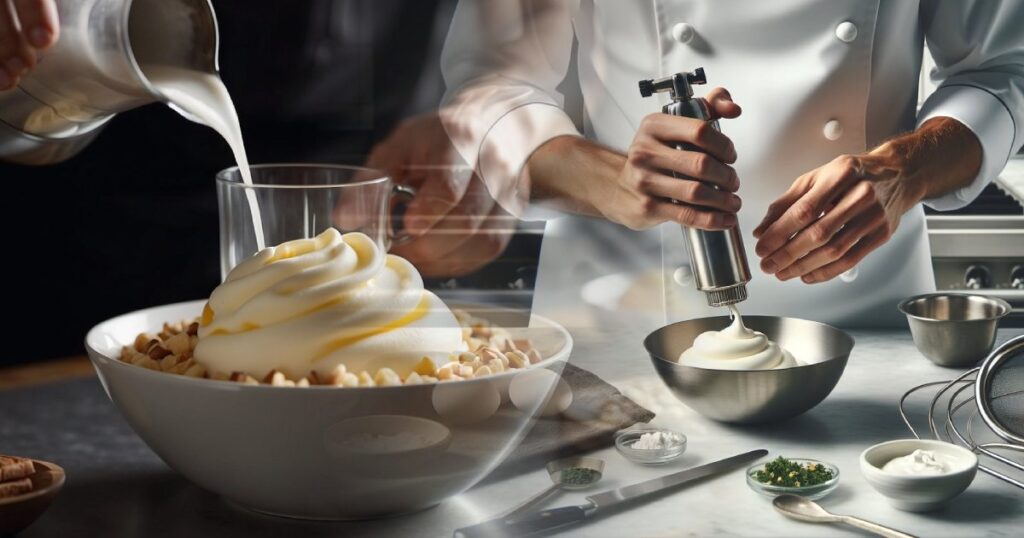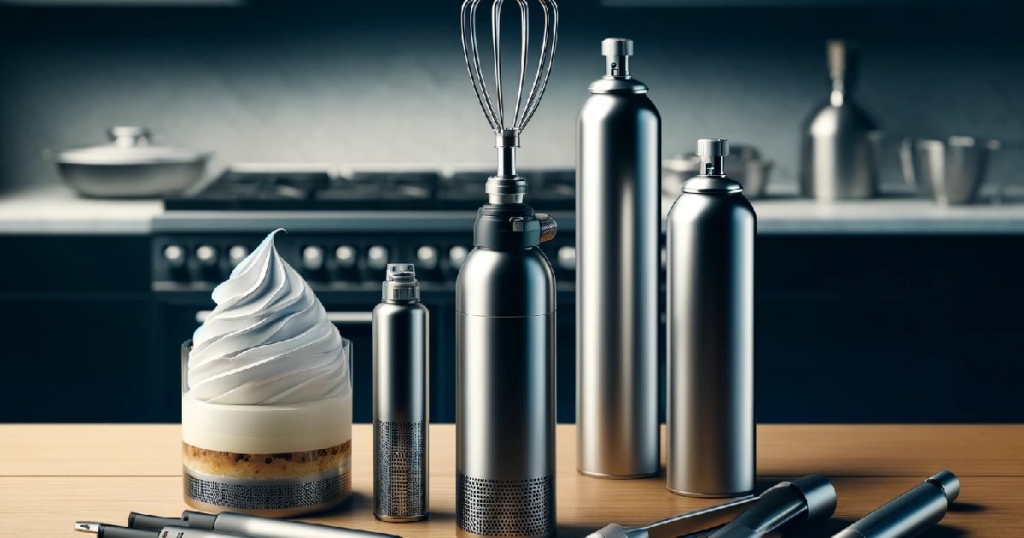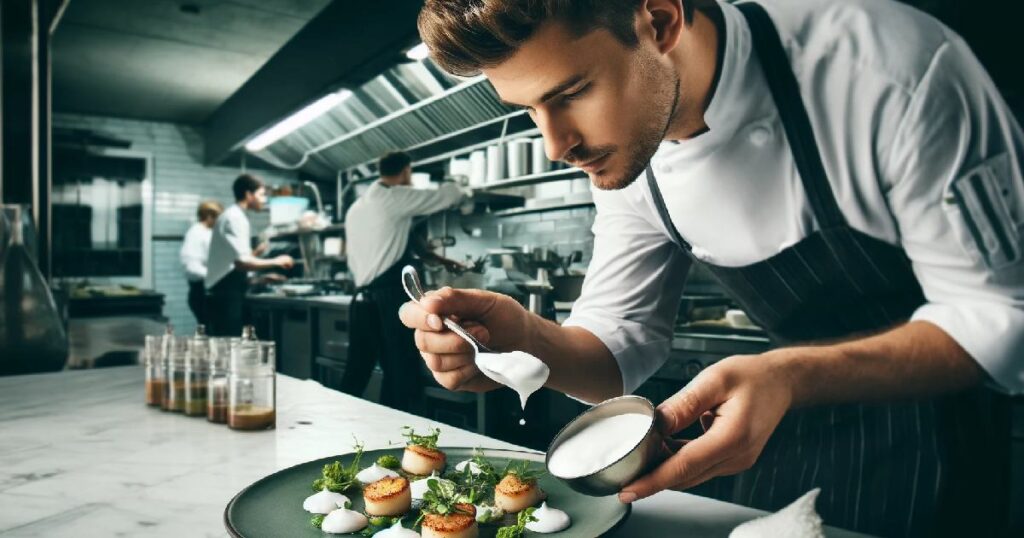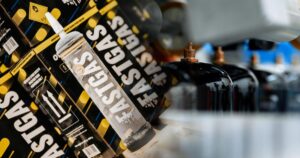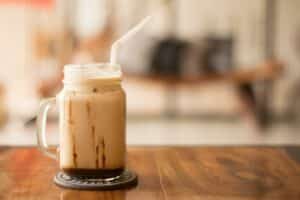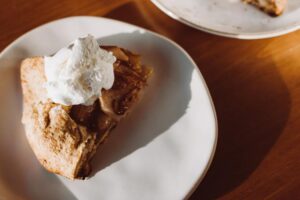Culinary Foam Techniques: Mastering Modern Gastronomy’s Airy Textures
FastGas-Blog
In culinary arts, foams represent a fusion of flavour and texture that can elevate a dish from the ordinary to the extraordinary. Often associated with the innovation of molecular gastronomy, foams have now become a staple in modern cooking, offering chefs a medium to introduce a light and airy element to their creations. Initially popularised by avant-garde chefs like Ferran Adrià, culinary foams have transcended their niche origins, finding a place in various cuisines and contexts.
Your understanding of culinary foams can begin with their basic composition—a liquid infused with air, creating a frothy texture ranging from fine and delicate to more robust and consistent. Various agents and techniques stabilise the air bubbles within the liquid to achieve this. From natural stabilisers like egg whites and gelatin to more modernist ingredients such as lecithin and xanthan gum, the choice of a thickening agent influences the foam’s texture and longevity.
Moreover, the tools you use are crucial in determining the type of foam you’ll create. A simple immersion blender can work for creating light froths, but for more complex and dense foams, equipment such as whipping siphons charged with nitrous oxide can be instrumental. These pressurised canisters allow rapid air infusion into the liquid, which, when dispensed, results in a stable and consistent foam that adds flavour and a sophisticated aesthetic to your culinary presentations.
Fundamentals of Culinary Foam
Culinary foam brings textural transformation to dishes through the infusion of air, creating a light and airy component on your plate.
Types and Characteristics of Foam
The texture and stability categorise culinary foams. The defining factor is the size of the air bubbles incorporated and their uniformity. Here’s a simple breakdown:
- Coarse Foams have larger, uneven air bubbles and a wetter texture, often achieved by whipping or blending.
- Fine Foams: Smoother and more consistent, these stable foams usually require specific tools such as whipped cream chargers.
Each type transforms your dish’s mouthfeel and aesthetic, transcending the primary flavour profile with the added dimension of texture.
Essential Ingredients for Foam Creation
For the successful creation of a culinary foam, specific ingredients are pivotal to the final quality and consistency:
| Ingredient | Role | Common Forms |
| Liquid Base | Starting foundation for the foam | Broth, juice, puree |
| Stabiliser | Maintains foam structure; reduces surface tension | Gelatin, agar-agar |
| Emulsifier | It helps mix liquids that normally don’t mix, stabilises foam | Lecithin, proteins |
Proteins are naturally occurring emulsifiers found in egg whites and cream, which provide the foaming action when air is introduced. Manufacturers use synthesised emulsifiers such as lecithin, derived from soy or eggs, to create foam. Stabilisers like gelatin and agar are gelling agents, lending firmness and stability to maintain the foam’s integrity. Technique and precision are key, as properly manipulating these ingredients determines the foam’s success.
Techniques and Tools for Crafting Culinary Foams
Creating the perfect culinary foam requires precision and an understanding of the tools and methods available. Here, we explore the techniques that can transform liquids into airy textures, enhancing the sensory experience of your dishes.
Utilising Siphons and Cream Whippers
When you want to infuse your culinary creations with a light, mousse-like texture, whipping siphons, also known as cream whippers, are your go-to tools. The technique involves charging a liquid mix, usually containing a foaming agent, with nitrous oxide through a siphon. In molecular gastronomy, chefs favour this process for its ability to create fine, consistent bubbles.
- Essential Steps:
- Combine your foam base (e.g., a flavoured liquid cream mix) with a stabiliser like xanthan gum to ensure the foam holds its structure.
- Pour the mix into the canister of the siphon.
- Seal the canister and charge it with a nitrous oxide cartridge.
- After chilling, dispense the foam with the siphon’s trigger to add an elegant touch to your dishes.
Whisking and Blending Methods
For foams that require a more hands-on approach, whisking and blending are traditional methods that can be equally effective. By vigorously whisking liquids such as egg whites or cream, you embed air into the mixture, creating foam bubbles. Using tools like a hand blender or immersion blender offers a modern twist, allowing for more control over the texture.
- To Consider:
- Use a hand whisk for more delicate foams that demand a careful touch.
- An immersion blender is ideal for creating denser foams to hold up as a dish’s main element.
- Transition to a hand blender when incorporating air into thicker mixes, achieving results akin to a whipped cream or a denser mousse.
By mastering these tools and techniques, you can add a dynamic element to your culinary repertoire, transforming the character and presentation of your dishes through the inventive use of texture.
Application of Foams in Cuisine
Foams in culinary arts bridge the gap between taste and texture, offering a new dimension to enhance your creations. These aerated marvels pique your guests’ interest by being both a flavour carrier and an interactive element for your dishes.
Sweet and Savoury Foam Pairings
- Sweet Foams: Your desserts will reach new heights when you add a flavoured foam dollop. Whether it’s vanilla foam atop a slice of chocolate gateau or citrusy lemon foam accompanying a berry tart, the lightness of the foam contrasts the dish’s richness, offering a more nuanced taste experience.
- Key Ingredients for Sweet Foams
- Juices from fruits like oranges, lemons, or passionfruit
- Sweet sauces, often lightened with egg whites or gelatin
- Spices such as cinnamon or vanilla to enhance the flavour
- Key Ingredients for Sweet Foams
- Savoury Foams: These can act as an innovative substitute for traditional sauces, encapsulating intense flavours without overwhelming the palate. Imagine a truffle foam hugging your perfectly cooked steak or a herbal foam bringing a new life to a poached fish dish.
- Key Ingredients for Savoury Foams
- Reducing stock or vegetable juices until concentrated
- Blending herbs like basil or thyme for a fresh burst of flavour
- Incorporating spices to complement the main ingredients
- Key Ingredients for Savoury Foams
Presentation and Serving Techniques
- Plating Foams: The fragile beauty of foam adds a visual drama that captures your guests’ attention. Pour a light, airy foam around the centrepiece of the plate, or create foam ‘clouds’ using silicone moulds, which you can then carefully place on the dish to draw the eye.
- Tools for the Perfect Pour
- FasGas whipped cream chargers are pivotal for achieving an even, consistent foam.
- Use narrow spouts or squeeze bottles for precision when pouring foam onto a dish.
- Tools for the Perfect Pour
- Enhancing Mouthfeel: Incorporating air into liquids transforms how a dish feels in your mouth. By interspersing sips and bites with the lightness of a foam, you can build a multi-sensory eating experience that elevates the art of tasting.
- Flavour Combinations
- Pair bold flavours with subtle foams to balance the dish.
- Match the intensity of the foam to the main dish, ensuring one does not overpower the other.
- Flavour Combinations
In your culinary repertoire, integrating foams can unleash your creativity and highlight your culinary skills. A mastery of foam allows you to innovate with unique flavours and reinvigorate the familiar, continually challenging the boundaries of modern cuisine.
Advanced Foam Concepts
In this section, you’ll explore how modern techniques have revolutionised foam application in the culinary world and the key factors contributing to creating the perfect foam.
Innovations in Molecular Gastronomy
Molecular gastronomy has greatly expanded the possibilities for culinary foams. The technique often involves Ferran Adrià’s pioneering methods, where the focus is on altering ingredients’ physical and chemical properties to produce new textures and flavours. For example, FastGas whipped cream chargers use nitrous oxide to create a range of foams with differing densities, from light and airy to rich and creamy. With this equipment, you can create hot and cold foams, broadening the range of recipes that can successfully incorporate foam.
When creating hot foams, the foam’s stability is paramount, often achieved using gelatine or other stabilising agents. Cold foams can be more forgiving and may hold their structure when refrigerated. Whichever method you choose, delicately infusing the foam with flavours from herbs, spices, or fruit purées can yield tantalising results. Democratising the art of creating foams allows you to transform simple vegetable foams into complex, flavourful experiences.
Challenges with Foam Stability and Consistency
Maintaining foam stability and consistency is crucial in culinary preparations. Stabilisers such as gelatine and emulsifiers play a key role in ensuring that foams do not collapse before they reach the diner. When using gelatine, it is vital to manage the balance between temperature and setting time to prevent the foam from becoming too dense or too runny.
One of the challenges you may face is producing foam with the desired texture, whether that be lace-like with larger bubbles or dense and creamy. Stabilising agents are essential here, as they help maintain the foam’s structure, ensuring that it doesn’t separate or weep. Emulsifiers can also aid in foam formation, helping keep the mixture homogenous.
Here’s a brief guide to keep in mind when creating foams:
- Hot Foam: Utilise stabilising agents like gelatine for structure; it must be dissolved completely.
- Cold Foam: Chill in the refrigerator to set; best used with fruit purées and lighter ingredients.
- Both: A careful infusion of flavours can turn a simple foam into a transformational element of your dish.
Pursuing the perfect foam is a delicate balance between science and artistry. You need to be precise in your technique while allowing room for your culinary creativity to shine.
Frequently Asked Questions
Discover the intricacies of producing culinary foam, from basic methods to application in modern cuisine. Here are your questions answered:
How can one create culinary foam without the use of a siphon?
To create culinary foam without a siphon, you can whip a liquid with a thickener like xanthan gum. You can also introduce air by whisking, blending, or even shaking a sealed jar.
What are the fundamental techniques for producing culinary foam?
Fundamental techniques for creating culinary foam include whipping, blending and using a whipping siphon or foam gun. The choice of technique often depends on the desired texture and consistency of the foam.
Could you provide some examples of foods that utilise foam?
Certain desserts, soups, and beverages often feature foams to enhance their presentation and texture. Examples include a foam-topped cappuccino, espuma on gourmet dishes, and mousse desserts.
In what ways are culinary foams applied within the realm of cooking?
You can use culinary foams to add a creative touch, a lighter texture, and a nuanced flavour to dishes. You can apply them as garnishes, flavour enhancers, or central elements in avant-garde cuisine.
What are the steps to making culinary foam with a foam gun?
Using a foam gun involves combining your flavoured liquid with a gas cartridge to create foam. Simply pour the mixture into the canister, charge it with the gas, shake well, and dispense.
Can you suggest some molecular gastronomy recipes that involve foam?
Molecular gastronomy recipes that feature foam include fruit espumas, herbed froths, or savoury foams layered on soups or cocktails. Recipes can involve unique flavour pairings and creative presentation techniques.


